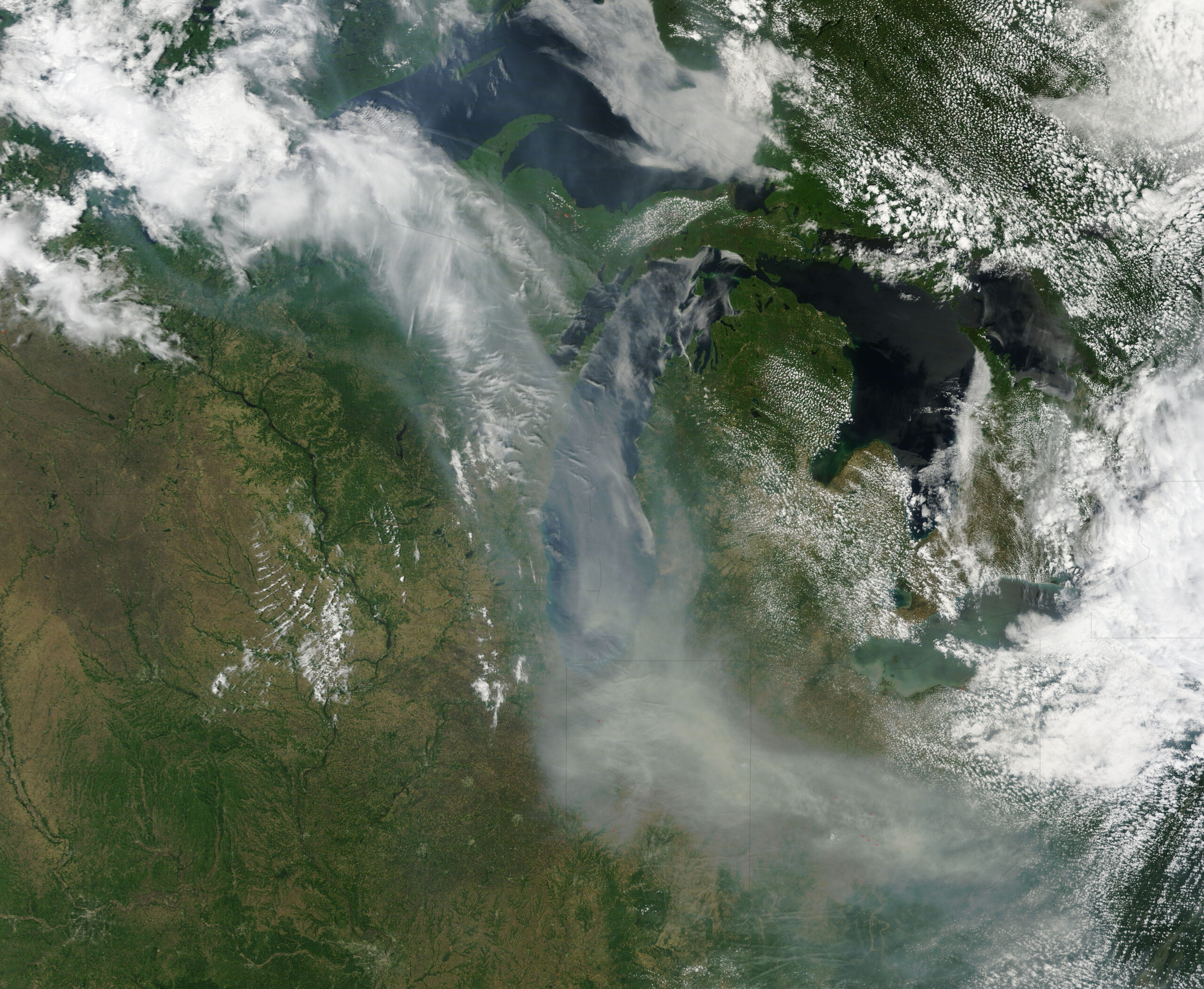The Importance of Clean Air: Understanding Air Quality and Its Impact
Clean air is a fundamental necessity for maintaining good health and enhancing quality of life. However, according to the World Health Organization (WHO), a staggering 99% of the global population is exposed to air pollution levels that exceed the organization’s guidelines. This revelation underscores the urgency of addressing air pollution worldwide. Kristina Pistone, a research scientist at NASA Ames Research Center, emphasizes the critical role that air quality plays in our daily lives. Her research spans atmospheric and climate science, with a particular focus on how atmospheric particles affect climate and cloud formation. In a recent discussion, Pistone shed light on the significance of air quality and its profound impact on both human health and the environment.
Main Air Pollutants and Their Sources
The Environmental Protection Agency (EPA) in the United States regulates six primary air pollutants: particulate matter (PM), nitrogen oxides (NOx), ozone (O3), sulfur oxides (SOx), carbon monoxide (CO), and lead. These pollutants originate from various sources. Some are natural, such as particulate matter from fires and desert dust, while others result from human activities, like ozone formed when sunlight reacts with vehicle emissions. Understanding these pollutants and their sources is vital for devising effective strategies to combat air pollution.
Impact on Health and Quality of Life
Air quality directly influences our health and how we experience life. Pistone draws a parallel, stating that just as we expect clean water for good health, we should also demand clean air. Poor air quality has been linked to numerous cardiovascular and respiratory issues. For instance, short-term exposure to nitrogen dioxide (NO2) can lead to coughing and wheezing, while long-term exposure increases the risk of developing respiratory diseases such as asthma. Ozone exposure can irritate the lungs and damage airways. Similarly, exposure to PM2.5, which are tiny particles measuring 2.5 micrometers or smaller, has been connected to heart and lung diseases.
Environmental Consequences
Beyond its effects on human health, poor air quality can have devastating environmental impacts. It can lead to the pollution of water bodies through processes like acidification and eutrophication. Acidification increases the acidity of water bodies, harming aquatic life, while eutrophication results from excess nutrients in water, leading to harmful algal blooms, dead zones, and fish kills. These environmental changes disrupt ecosystems, killing plants, depleting soil nutrients, and harming animals.
Measuring Air Quality: The Air Quality Index (AQI)
Air quality, much like the weather, can change rapidly, even within hours. To monitor and report air quality, the EPA uses the Air Quality Index (AQI) in the United States. The AQI measures each of the six main air pollutants on a scale ranging from “Good” to “Hazardous,” producing a numerical value between 0 and 500. An AQI value of 50 or lower is considered good, while values between 51 and 100 are moderate. When the AQI ranges from 100 to 150, it is considered unhealthy for sensitive groups, and higher values indicate unhealthy conditions for everyone. A health alert is issued when the AQI reaches 200, and values exceeding 300 are deemed hazardous, often due to particulate pollution from wildfires.
Innovative Air Quality Monitoring
Air quality sensors are invaluable tools for capturing localized air quality data. In 2022, the Trace Gas Group (TGGR) at NASA Ames Research Center launched the Inexpensive Network Sensor Technology for Exploring Pollution (INSTEP). This network of low-cost sensors measures various pollutants and has been deployed in areas such as California, Colorado, and Mongolia. INSTEP has proven especially useful for monitoring air quality during California’s fire season.
In 2024, NASA’s Airborne and Satellite Investigation of Asian Air Quality (ASIA-AQ) mission integrated sensor data from aircraft, satellites, and ground-based platforms to assess air quality across several Asian countries. This mission utilized multiple instruments, such as the Meteorological Measurement System (MMS) from NASA Ames Atmospheric Science Branch, to refine air quality models and forecast conditions.
NASA’s Contribution to Air Quality Monitoring
NASA has an extensive array of Earth-observing satellites and other technologies dedicated to capturing and reporting air quality data. In 2023, NASA launched the Tropospheric Emissions: Monitoring of Pollution (TEMPO) mission, focusing on measuring air quality and pollution over North America. Additionally, NASA’s Land, Atmosphere Near real-time Capability for Earth Observations (LANCE) tool provides air quality forecasters with measurements from multiple NASA instruments within three hours of observation.
Accessing Air Quality Information
For those interested in tracking air quality, several resources are available. The EPA’s website provides comprehensive air-quality-related sources. Additionally, AirNow is a platform that reports the local AQI across the United States, enabling users to check air quality levels in their area. Kristina Pistone recommends Purple Air’s real-time map, which displays PM data from a crowd-sourced network of low-cost sensors, translating these measurements to estimate the AQI.
For those concerned about air quality, Clean Air Crew offers valuable resources on indoor air quality, breathing safely with wildfire smoke, and even building your own box fan filter. These resources empower individuals to take proactive steps in protecting themselves from the harmful effects of poor air quality.
Further Exploration and Research
To delve deeper into air quality research applications, NASA’s Applied Sciences Program’s Health & Air Quality program area provides insights into the use of Earth observations for assessing and addressing air quality concerns at local, regional, and national levels. The NASA Health and Air Quality Applied Sciences Team (HAQAST) further connects NASA data and tools with stakeholders, facilitating a better understanding of the effects of air quality on human health.
In conclusion, clean air is not just a necessity for survival; it is essential for a healthy and fulfilling life. Understanding the sources, impacts, and monitoring of air quality is crucial in our efforts to combat air pollution and safeguard both human health and the environment. By leveraging advanced technologies and collaborative research efforts, we can work towards a future where clean air is accessible to all.
For more Information, Refer to this article.

























![The Apex Legends Digital Issue Is Now Live! Apex Legends - Change Audio Language Without Changing Text [Guide]](https://www.hawkdive.com/media/5-Basic-Tips-To-Get-Better-On-Apex-Legends-1-218x150.jpg)








